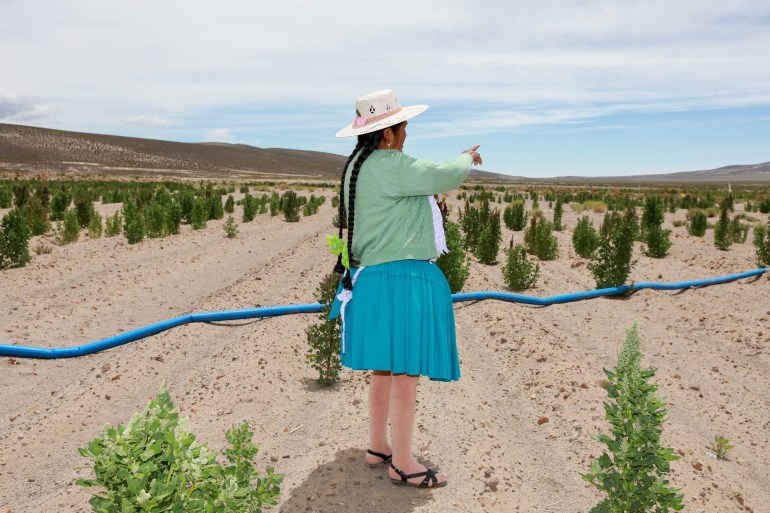Surviving the white gold rush – life in South America’s ‘lithium triangle’ | Environment

[ad_1]
Calcha K, Bolivia – Teófila Cayo Calcina, 56, stands among her rows of quinoa plants, pointing towards the horizon. “The lithium plant is 50km in that direction. We are worried that the mining could leave us with not enough water to survive,” she says, clearly disheartened.
Calcina lives with her husband in one of the houses overlooking the central square of the tiny village of Calcha K, an hour’s walk from her quinoa fields, where she grows quinoa real, a variety which is native to the Uyuni region of Bolivia and is considered a “superfood” in Western countries such as the US and Europe.

The village is home to 400 people who speak Quechua, an ancient Inca language but still very widely spoken in South America. This community, where most people’s livelihoods are tied to farming quinoa and herding llamas, lives on the edge of the Uyuni salt flat in the Potosí region, part of the Bolivian Andes.
The Salar of Uyuni forms the world’s largest salt flat, stretching for nearly 10,500sq km (more than 4,050 square miles) – slightly larger than the size of Lebanon – and attracting tourists from all over the world who come to marvel at its unique landscape.
In recent years, salt flats such as this one have also begun to draw intense interest from “green” industries around the world because the lightest metals on Earth are mined from lithium-rich brines, typically found in salt flats.

Last year, geologists discovered a vast deposit of two million tonnes of lithium in the district of Potosí, leading to a re-evaluation of the previously estimated resources of the metal on Bolivian soil.
The United States Geological Survey (USGS) now estimates that Bolivia has about 23 million tonnes (more than 20 billion kg) of lithium – some two million tonnes more than previously thought.
The mineral is a key ingredient for the production of electric car batteries, which countries around the world are rushing to produce in the race to switch away from fossil fuels. Bolivia’s President, Luis Arce, has announced that he plans for the country to be able to export batteries by the end of 2026.
The new lithium find has propelled Bolivia to number one in the world for lithium deposits, followed by Argentina with 22 million tonnes and Chile with 11 million tonnes.
This is the so-called “Lithium Triangle” where the rush for “white gold” is very much under way.
[ad_2]



